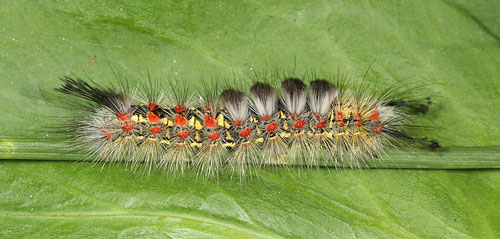

1 & 2One of the tussock moth caterpillars from the side of Valley Life Sciences Building (VLSB)....
Thanks to Peter Ralph for finding this caterpillar, and for noticing others were pupating.
Dozens if not hundreds of these caterpillars have been busy eating leaves on a coast live oak next to the building where this caterpillar was found.
Photos taken May 10, 2006.
Taxonomy: These moths have been known as Orgyia vetusta, but according to Jerry Powell "there is some disagreement, and that name maybe should be limited to the immediate coastal populations, in which case ours is O. cana. The larvae differ."
From Paul Schaefer, January 17, 2013:
"With respect to identifying O. cana vs. O. vetusta: O. cana has the red coloration around nearly every veruccae or wart on nearly all body segments and very long and pronounced black anterior hair pencils. O. vetusta has no red coloration, instead dark to black integument broken by patches of yellow and they have very short, stubby anterior hair pencils. Also, the latter seems to be very much more coastal, as in the headlands just north of Bodega Bay (my first personal encounter some 20 years ago)."
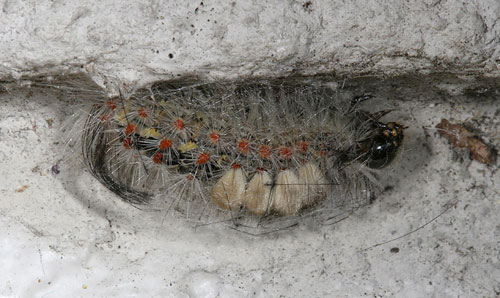
3A caterpillar making its cocoon on the side of VLSB.
Photo taken June 15, 2006.
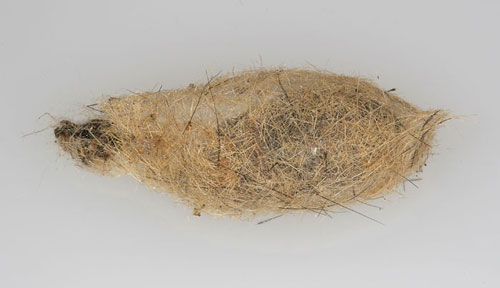
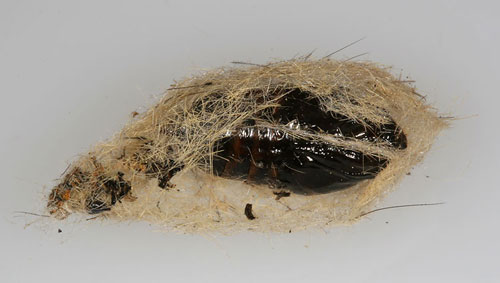
4 & 5A cocoon (taken from the side of VLSB; I brought several home).
Top photo: top view; what you see when it's attached to the wall or a tree
Bottom photo: bottom view, which you can only see because I've removed the cocoon from the wall
In the bottom photo, the dark junk on the left side is a bit of the exoskeleton, particularly the caterpillar head/mouth parts.
Photos taken June 6, 2006.
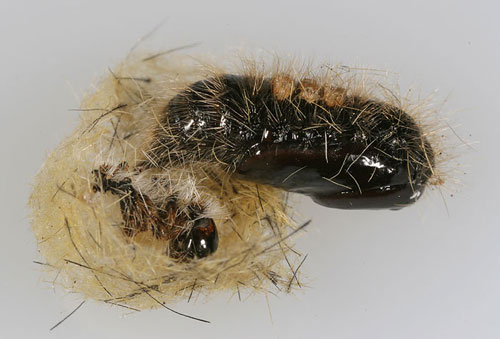
6Another pupa with its cocoon. (It was hard to keep them inside the cocoons after removing from the wall.) The former caterpillar mouthparts/head exoskeleton are especially noticeable towards the left bottom in this photo. Note also the former caterpillar tufts still visible on the pupa.
Photo taken June 6, 2006.
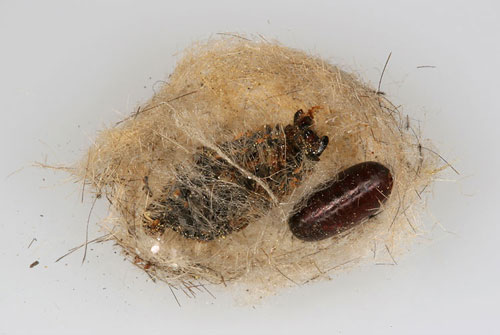
7This caterpillar was parasitized by a fly. The caterpillar/pupa is dead, a hollow shell, and the pupa of the parasitoid is on the right. Scroll down to see the fly...
Photo taken June 6, 2006.
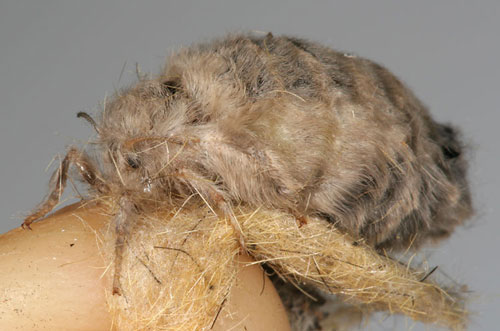
8Adult female -- they are wingless.
Photo taken June 12, 2006.

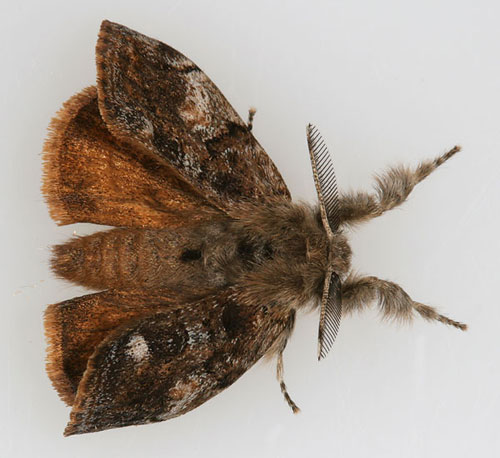
9 & 10Adult male.
Photos taken June 12, 2006.
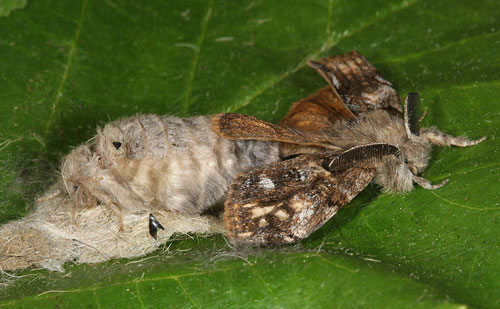
11The first two that emerged at my house are mating here. The female produced some eggs afterwards but not as many as the ones I saw still attached to VLSB.
Photos taken 1:00 a.m. June 14, 2006.
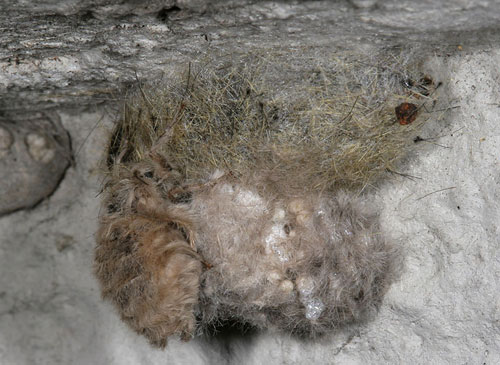
12Female finishing laying eggs attached to the side of VLSB and on her cocoon. She is on the left clinging to her cocoon and eggs; the eggs are on the middle & right bottom (they have hair on them like their mother); the cocoon from which she emerged is towards the top.
Photo taken June 15, 2006.
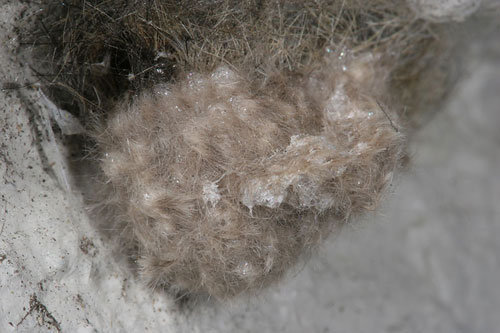
13Another moth's newly laid eggs on VLSB.
Photo taken June 15, 2006.
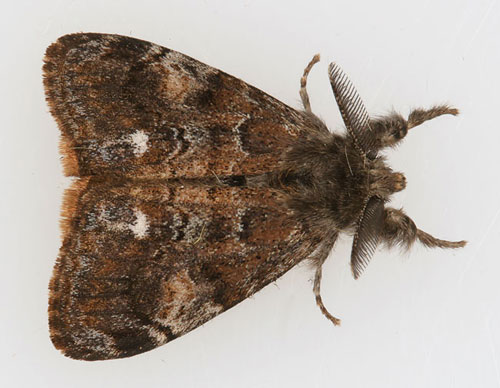
14Meanwhile, another male moth emerged from his cocoon at my house.
Photo taken June 15, 2006.
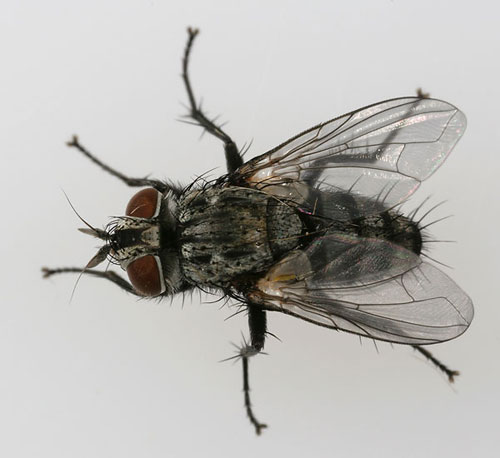
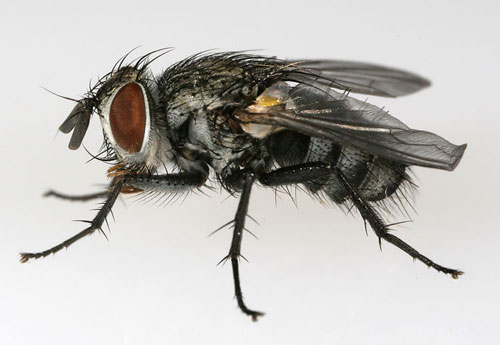
15 & 16One of the parasitoids emerged while in a container at my house -- it's a fly.
Compsilura concinnata (Tachinidae)
Photos taken June 15, 2006.
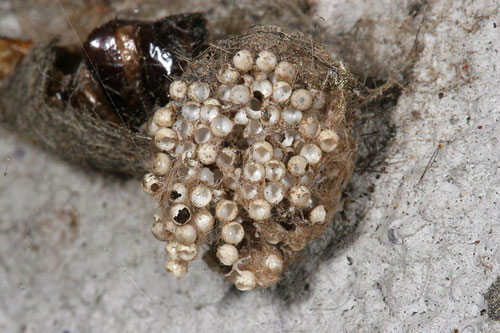
17Some of last year's eggs on VLSB.
Photo taken June 15, 2006.
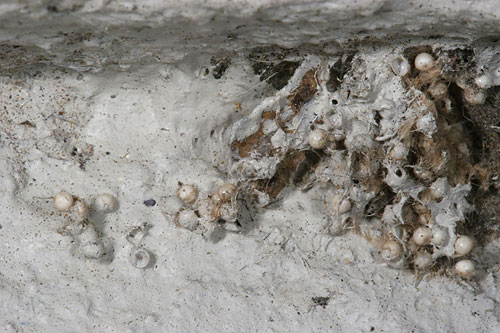
18Old eggs have been painted over with the gray paint that's on VLSB.
Photo taken June 15, 2006.
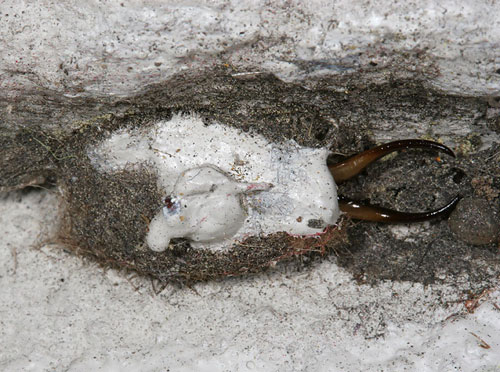
19An earwig finds nice shelter inside an old, painted cocoon on the side of VLSB.
Photo taken June 15, 2006.